- Home
- entertainment
- news
- The most infamous crime committed in every state
The most infamous crime committed in every state
Gabbi Shaw

- There's something about true crime that interests us, as popular podcasts like "Serial" and documentaries like "Making a Murderer" have shown.
- For all those true crime fans out there, we picked the most notorious crime that occurred in all 50 states.
- The crimes range from murder to disappearances to hate crimes. Some of the slides contain content that may be upsetting for some readers.
Something about crime fascinates people — whether it be a morbid interest in the macabre, a genuine attempt to make sense of what happened, or an obsession with trying to piece together a cold case.
The following 50 felonies are some of the most captivating crimes ever committed, having gripped people the world over — some for as long as 80 years. Some are solved, while others remain a mystery.
Here are some of the most well-known crimes that took place in every state.
Editor's Note: These accounts may be upsetting to some as they describe details of real-life cases.
ALABAMA: The arrests of the Scottsboro Boys in Scottsboro
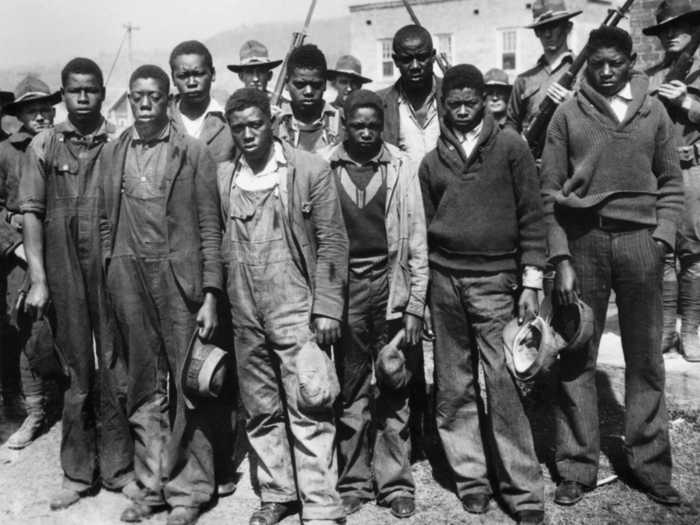
Charlie Weems, Ozie Powell, Clarence Norris, Andrew Wright, Leroy Wright, Olen Montgomery, Willie Roberson, Haywood Patterson, and Eugene Williams were the nine "Scottsboro Boys."
The nine African American teenagers, aged between 13 and 19, were accused of raping two white women. They had all been riding a train on which a fight broke out.
Despite one woman recanting her story, eight of the nine men were sentenced to death, resulting in a lengthy legal battle that had massive implications for America's race relations and legal system. Many now consider the case a gross miscarriage of justice (mostly due to its all-white juries).
In 2013, 82 years after their arrests, three of the Scottsboro boys were posthumously pardoned. Four already had the charges against them dropped in 1938, and one was pardoned in 1976 as the last living Scottsboro boy. All nine were innocent — it just took eight decades for Alabama to admit it.
ALASKA: The Coulthurst family murders in Craig

The entire Coulthurst family (father, mother, and two kids), and four teenage deckhands, were shot to death aboard a fishing boat called the Investor on September 6, 1982. The killer is then believed to have returned to the scene the next afternoon to set the boat on fire.
It was the biggest mass murder in Alaskan history and rocked the small fishing town of Craig, where it took place.
Two years after the murders, the police arrested John Peel, a former employee of the Coulthursts. His first trial in 1986 ended in a hung jury and a mistrial, and he was acquitted in his second trial. He told People in 2017, "Somebody out there knows what happened."
The case remains unsolved.
ARIZONA: The murder of Bob Crane in Scottsdale

Crane was your typical every-man. He starred in "Hogan's Heroes," a popular sitcom from the '60s and '70s, married his high school sweetheart when he was 19, and had three kids. He divorced and re-married an actress on the show, and eventually had two more children.
But in 1978, he was found murdered in his apartment, having been bludgeoned to death.
While the violent death of any Hollywood actor would cause a media frenzy, the hype kicked into overdrive once it was discovered that Crane was potentially a sex addict (and this was before the term existed). Police found an extensive X-rated video and Polaroid collection featuring Crane with various women.
The case remains unsolved 42 years later. A friend of Crane's was arrested for the murder in the '90s after the case was re-opened, but he was acquitted.
ARKANSAS: The West Memphis Three's alleged murders in West Memphis

In 1993, three second-graders (Steve "Stevie" Branch, Christopher Byers, and Michael Moore) were found in a creek, tied up with their own shoelaces, and mutilated. The community was quick to pin the murders on three alleged "Satan worshippers," Jessie Misskelley, Damon Echols, and Jason Baldwin (teens who became known as the "West Memphis Three").
All three were convicted, with Echols getting the death penalty, and Misskelley and Baldwin receiving life sentences. Their case attracted high-profile attention stemming from a popular documentary about the case called "Paradise Lost: The Child Murders at Robin Hood Hills."
In 2007, new DNA evidence could not prove a link to any of the accused — there's nothing to suggest they were at the site of the crime besides dubious eyewitness accounts and contested confessions. In 2011, the three were released from prison after entering Alford pleas (a rare plea where they asserted their innocence while acknowledging that prosecutors had enough evidence to convict them). They had each spent 18 years in jail.
CALIFORNIA: The serial rapes and murders of the Golden State Killer (aka the Original Night Stalker/East Area Rapist)
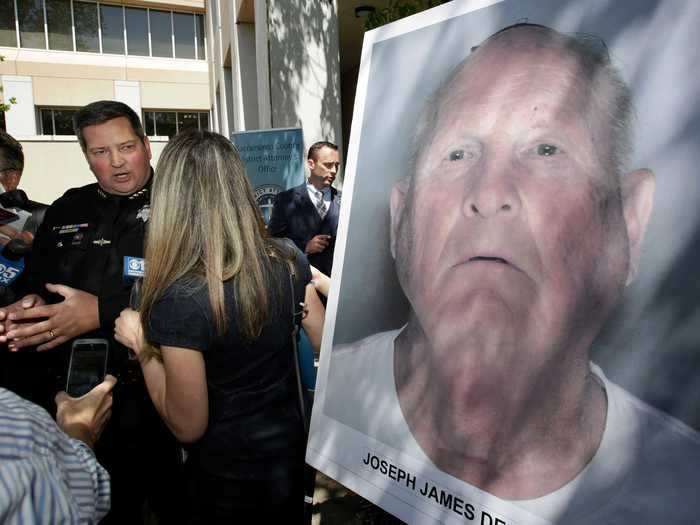
On April 26, 2018, the FBI confirmed that they had arrested a man they believed to be the terrifying Golden State Killer thanks to DNA evidence. The case had been cold for 42 years, but was recently brought back into the public eye when the book "I'll Be Gone in the Dark" was published in February 2018, detailing the multiple crimes authorities believed were committed by the Golden State Killer.
The suspect, identified as Joseph DeAngelo, was accused of carrying out 12 homicides, 45 rapes, and more than 120 residential burglaries between 1976 and 1986. The crimes were committed throughout the state of California, requiring multiple police departments to work together and share evidence (something that wasn't common in the '70s and '80s).
At a press conference, the Orange County District Attorney said, "Joseph James DeAngelo has been called a lot of things by law enforcement. He's been called the Eastside Rapist, he's been called the Visalia Ransacker, the Original Nighstalker, and the Golden State Killer. Today it is our pleasure to call him defendant."
In August 2020, he was convicted and sentenced to life in prison, after facing his victims and their loved ones in court.
COLORADO: The murder of JonBenét Ramsey in Boulder
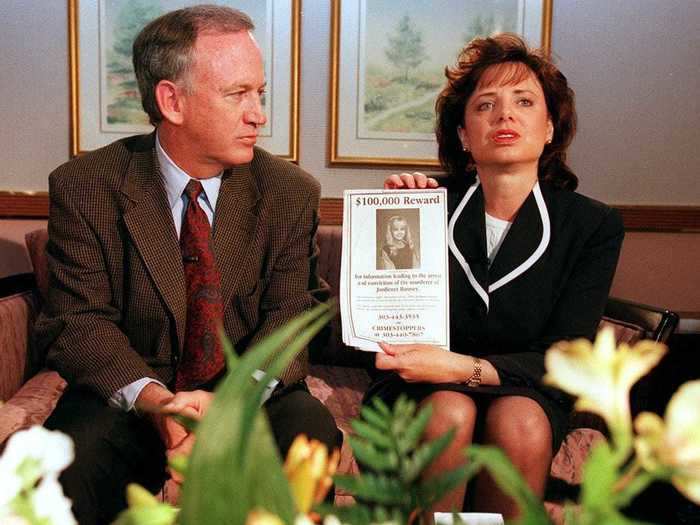
The mystery of what actually happened to JonBenet is one of the most famous murder cases in the entire US, not just Colorado. Few cases rival the amount of speculation that the death of the 6-year-old girl has received in the 24 years since.
The day after Christmas in 1996, Ramsey was found dead in the basement of her own home, after her parents discovered a ransom note demanding money.
Her parents were viewed as suspicious, but DNA evidence cleared them, prompting the Boulder County District Attorney to apologize to them. A man named John Mark Carr confessed in 2006, but it was ruled to be false since he couldn't provide any additional details and his DNA didn't match what was discovered at the scene. The case remains active, and there are plenty of other theories about what happened to the little girl.
CONNECTICUT: The murder of Helle Crafts, aka "The Wood Chipper Murder," in Newtown
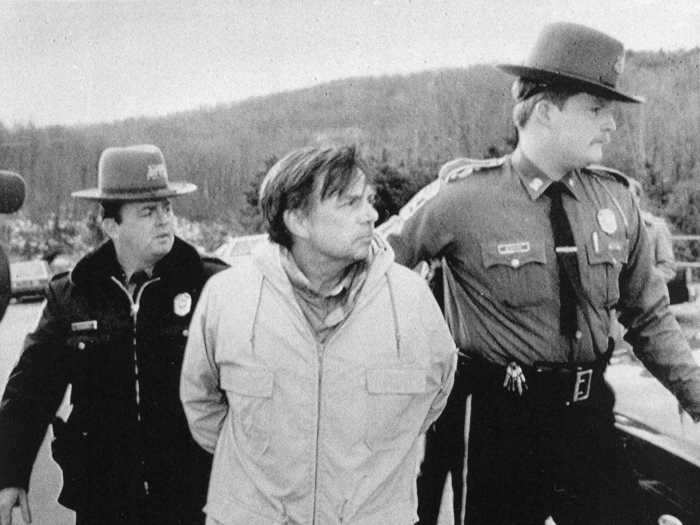
Most people know the murder of flight attendant Helle Crafts by its nickname, "The Wood Chipper Murder." In 1986, Crafts went missing after catching her pilot husband Richard cheating on her — he told police that she had left him to return to Denmark, where she was originally from, but her friends and the police weren't convinced.
After searching the Crafts' home, authorities found credit card statements for suspicious items that were nowhere to be found in the house, such as a freezer, bed sheets, and a rented wood chipper. The police also found bits of bone, a fingernail, and hair samples that they said were Helle's.
The prosecution contended that Crafts had become enraged with his wife, murdered her, cut her body up with the chainsaw, and then disposed of it using the rented woodchipper. The jury deliberated for eight hours before ruling Crafts guilty of his wife's murder. The verdict was a state first: a guilty ruling without a body.
DELAWARE: The murder of Anne Marie Fahey in Wilmington

The 12-week trial about the disappearance of Anne Marie Fahey kept people captivated in the late '90s.
Even though Fahey was last seen in Philadelphia, as a Delaware resident her case was mainly conducted in Delaware. Fahey was last seen in June 1996, and she had recently become involved with a married lawyer, Thomas Capano, who was arrested for her murder in November 1997.
But without a body, it was difficult to prove that Capano had been involved in her disappearance, or even death until Capano's younger brother testified, claiming that the two of them had taken their boat out on the Atlantic to dump the body of a woman (presumably Fahey).
More things started to fall into place for the prosecution. One of Capano's other extramarital affairs, Deborah MacIntyre, confessed to buying a gun for Capano at his request. The defense changed their strategy, claiming that Capano had dumped the body, but only after MacIntyre shot Fahey in a jealous rage. MacIntyre denied this claim.
The jury ruled in favor of the prosecution: Capano was found guilty of the murder and was sentenced to death (later commuted to life in prison). He died in 2011 due to a heart attack. Fahey's body and the gun in question have never been found.
FLORIDA: The death of 2-year-old Caylee Anthony in Orlando

Caylee Anthony, 2, was reported missing by her maternal grandmother, Cindy, who told police that she hadn't seen Caylee in 31 days and that her daughter's car smelled like a dead body. What followed was a bizarre (and confusing) sequence of events.
First, Casey reported that Caylee had been abducted by her nanny, and she hadn't reported this to the authorities because she was scared — in reality, there was no nanny. Other lies and inconsistencies included that Casey told her parents she worked at Universal Studios (untrue), and that she seemed to be acting perfectly normal even though her daughter was missing.
When Caylee's remains were found in a plastic bag, the state of Florida officially charged Casey with her murder and announced they were seeking the death penalty, starting what has been dubbed the "social media trial of the century" by Time.
Casey's defense team claimed that Caylee had drowned in her family's pool, and that Casey's father George had disposed of Caylee's body in order to save Casey from neglect charges. They also claimed that George sexually abused Casey (which he denied) and that she was afraid of him, which is why she didn't report him to authorities.
Casey was eventually found not guilty, and Caylee's murder remains unsolved.
GEORGIA: The murders of Jacinth Baker and Richard Lollar in Atlanta

The morning after Super Bowl XXXIV in 2000, a fight broke out outside a nightclub in Atlanta that left Jacinth Baker and Richard Lollar dead on the street. Authorities ended up charging Ray Lewis, an NFL linebacker, and two companions, Reginald Oakley and Joseph Sweeting, with murder and aggravated assault.
Baker and Lollar were stabbed, and Oakley and Sweeting had bought new knives that week. Baker's blood was found in Lewis' limo.
Lewis eventually pleaded guilty to obstruction of justice in order to downgrade the murder charges. He said, "I was never anything in this case but a witness." Oakley and Sweeting were acquitted, as they had claimed self-defense. Lewis was able to return to the NFL and had a prolific career.
Lewis spoke about the ordeal in an interview with NPR, explaining, "I don't live to prove myself to people. And I never will — never."
HAWAII: The Xerox murders in Honolulu

The Xerox murders, as the incident was known, is still the deadliest mass shooting in Hawaii's history. In 1999, Byran Uyesugi, a disgruntled employee of Xerox, walked into the building's office in Honolulu and fatally shot seven people and injured one more. According to the New York Times, he was "under some kind of unusual stress at work."
Uyesugi was eventually convicted of seven accounts of first-degree murder and an additional charge of second-degree attempted murder. He is currently serving a sentence of life in prison.
IDAHO: The murder of Jeralee Underwood in Pocatello

Jeralee was just 11 years old when she went missing in the summer of 1993. She had been missing for a week when James Edward Wood was charged with her kidnapping.
Jeralee had visited his home on her paper route. Shortly after she left, he told his family he was going to buy some alcohol, which is when he followed her, kidnapped her, sexually assaulted her, and shot her.
Eventually, Wood led authorities to Snake River, where he had buried her body.
Wood was soon connected to multiple other crimes across the country. He was eventually given the death penalty, but died on death row.
ILLINOIS: The "perfect crime" of Leopold and Loeb in Chicago
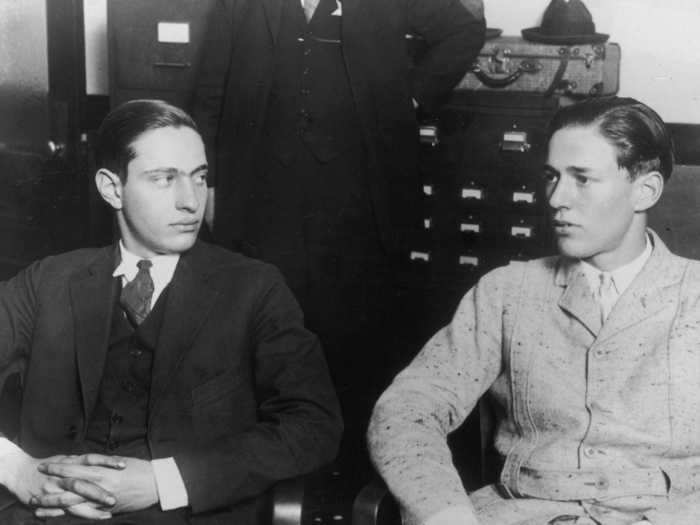
Leopold and Loeb were two rich, smart, and privileged college students in Chicago who wanted to prove their intellectual superiority by committing the perfect crime.
They spent months planning to kidnap and murder a child, and in May 1924 turned their plan into action. They offered Bobby Franks (Loeb's 14-year-old cousin) a ride home, then bludgeoned him to death. When they disposed of Franks' body, however, Leopold made a fatal flaw — he dropped his glasses. While they were regular glasses, they had a special hinge that only three people in Chicago had. The pair was quickly arrested and convicted, and admitted that they only committed the murder for the thrill of it.
Loeb was murdered in prison, and Leopold served 34 years and was released on parole in 1958. He died at 67 due to a diabetes-related heart attack.
INDIANA: The murder of Sylvia Likens in Indianapolis
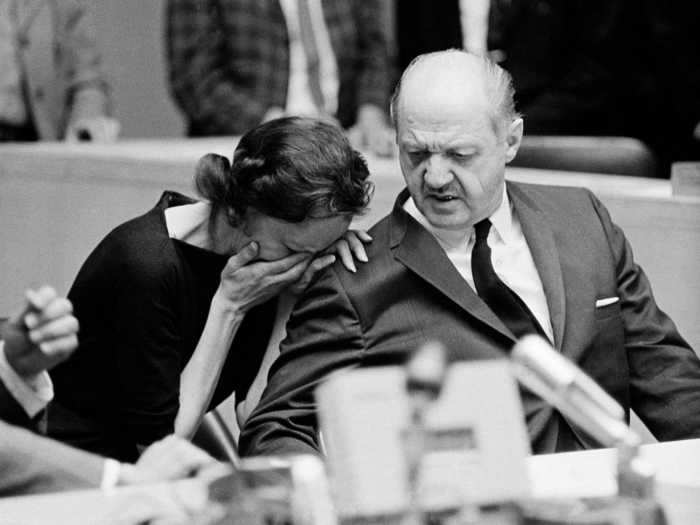
The murder of Sylvia Likens is known as the "worst crime in Indiana history." Likens was just 16 when she was found dead in the basement of her temporary home.
Her carnival-worker parents left Sylvia and her sister in the care of 37-year-old Gertrude Baniszewski, a mother of seven, paying Baniszewski by the week.
Three months later, on October 26, 1965, police found Sylvia'a emaciated corpse, apparently covered in hundreds of wounds. Baniszewski — with the help of some of her own kids as well as a few neighborhood kids — had tortured the girl to death.
Baniszewski served 20 years in prison, but was eventually released on parole. The children involved served between two and seven years.
IOWA: The "Cain and Abel" murders in Cedar Falls

When Leslie Mark and his wife, both 25, and their two children were found murdered in their farmhouse in 1975, the police didn't hesitate to question Mark's older brother, Jerry. The two were later compared to the ill-fated Biblical twins Cain and Abel.
Jerry Mark was convicted of the killings in 1976 and is serving four consecutive life sentences, but maintains his innocence despite having exhausted his appeals. He owned the same bullets found at the crime scene and lied about them, as well as about various other things, making him look suspicious. However, evidence was mostly circumstantial, and more recent DNA results exclude him from being linked to the crime scene.
While a judge ordered his release or a retrial in 2005, Mark continued to lose his appeals and is still serving life in prison.
KANSAS: The Clutter family murders in Holcomb
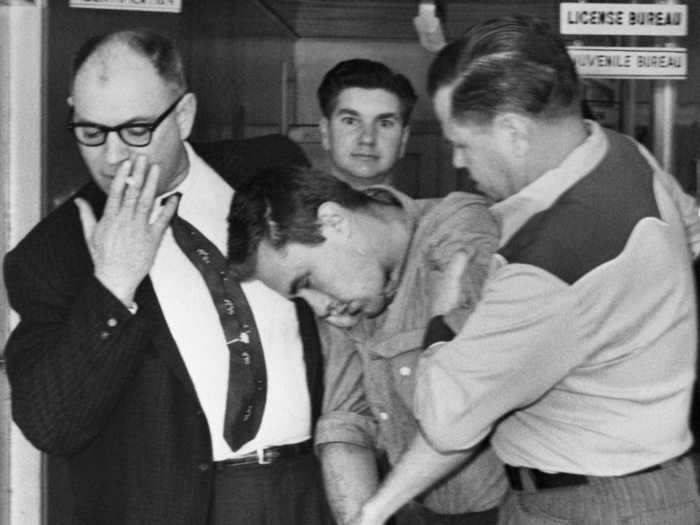
The Clutter family murders are most well-known for their connection to Truman Capote's true crime masterpiece "In Cold Blood."
Four of the Clutters were found dead in their home in 1959 (the two eldest daughters had moved out). It was later uncovered that they had been shot during a botched robbery by two ex-cons out on parole, who believed that Herbert Clutter had a safe containing money (he didn't).
The two murderers, Richard Hickock and Perry Smith, both confessed, and graphically spoke about committing the crime. The jury deliberated for just 45 minutes before convicting them and sentencing them to death. Both were executed after five years on death row.
KENTUCKY: The Standard Gravure shooting in Louisville
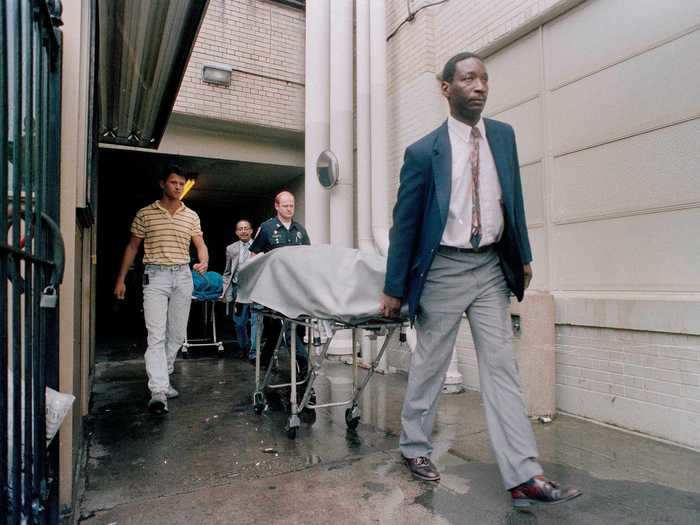
On September 14, 1989, James Wesbecker walked into his former workplace, the Standard Gravure printing plant, and started shooting. He killed eight people and injured 12 before shooting himself, and the incident became Kentucky's deadliest mass shooting. Wesbecker had allegedly tried to take his own life at least three times prior to that day and is said to have had a long history of manic depression.
It is believed that Wesbecker was becoming increasingly unwell in the weeks leading up to the shooting. He was on disability leave from the Standard Gravure, and was openly furious about it. He spoke of "wiping the place out" and getting "even with the company," but those who knew him assumed it was just talk — they were tragically mistaken.
LOUISIANA: The murder of Faith Hathaway outside of Mandeville

Hathaway was walking home from her own farewell party in May 1980 (she was joining the Army), when Robert Lee Willie and Joseph Vaccarro pulled over, abducted her, raped and tortured her, and eventually killed her. Hathaway was stabbed 17 times. The two eventually left her body near the Bogue Chitto River, off a highway.
Willie and Vaccarro raped another woman and attempted to murder her boyfriend a little over a week after the death of Hathaway. Both survived.
The pair were captured in Arkansas, brought back to Louisiana for the trial, and convicted. Vaccarro was sentenced to life in prison, and Willie was sentenced to death, perhaps due to his cavalier attitude about the crimes. He told the courtroom that he had enjoyed raping Hathaway, with her parents in the room.
Willie became close with a nun who was there as a spiritual advisor, and the relationship was depicted in a movie starring Sean Penn and Susan Sarandon, called "Dead Man Walking." Before Willie was executed, he is said to have winked at the nun.
MAINE: The triple-homicide in Amity
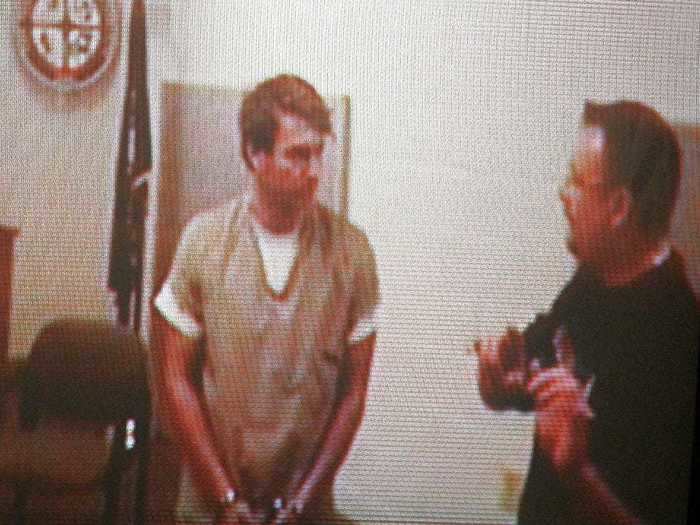
The small town of Amity was rocked by a triple-homicide in 2010. Jeremy Ryan, his son Jesse, and friend Jason Dehahn, were all found stabbed to death in a mobile home.
Thayne Ormsby, who was staying with a local family, the Strouts, confessed to the murders. DNA evidence at the crime scene confirmed that he was present at the mobile home.
Robert Strout, 64, was sentenced to four years in prison for helping Ormsby conceal evidence (he helped him get rid of Ryan's truck and disposed of the murder weapon, a knife). He told police that Ormsby threatened to kill him and his family if they didn't help him.
However, during the course of the trial it came to light that the Strouts and Ryans allegedly had a contentious relationship, due to Jeremy Ryan having a child with Robert's daughter.
Ormsby, who was just 20 at the time of the murders, pleaded not guilty by reason of insanity. The jury dismissed this and found him guilty. He was sentenced to life in prison, and since the state of Maine abolished parole, will remain in prison.
MARYLAND: The murder of Hae Min Lee in Baltimore

Few crimes have taken on a second life like the tragic murder of 18-year-old high school student Hae Min Lee, who was found dead inside Baltimore's Leakin Park four weeks after her disappearance in 1999.
Eventually, her ex-boyfriend Adnan Syed was arrested and convicted of her murder based largely on circumstantial evidence, the confession of their mysterious fellow student Jay, an incompetent lawyer, and an inability to provide a solid alibi. He was sentenced to life plus 30 years.
The case came roaring back into the public eye with the 2014 podcast "Serial," which took a deep dive into the case and captivated listeners all over the world. Soon, everyone learned about how Jay could be considered untrustworthy, how some of his story didn't completely line up, how Syed's lawyer didn't do her due diligence by following up with potential alibis, how racism could've played a part, and how the cell phone records that seemingly proved Syed's locations should never have been used at all.
Syed's conviction was vacated in 2016, and Maryland's second-highest court ruled he deserved a new trial — this was overturned by a higher court. The Supreme Court of the United States denied Syed a new trial, so it remains to be seen what happens to Syed.
Lee's family, for their part, have said they remain convinced of Syed's guilt, now more than ever.
MASSACHUSETTS: The Borden family murders in Fall River
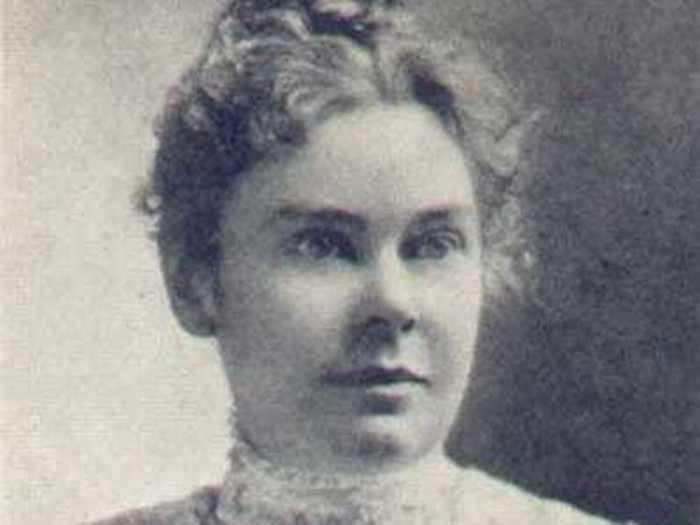
You might know Lizzie Borden from the rhyme: "Lizzie Borden took an axe/And gave her mother 40 whacks/When she saw what she had done/She gave her father 41."
In reality, Borden was acquitted of the 1892 murders of her father and stepmother. Borden had found her father, beaten to death with a hatchet, before alerting the family's maid. Together they then found Borden's stepmother in an upstairs bedroom, also the victim of a hatchet attack.
Police could find no evidence of who committed the crime, but arrested Lizzie and charged her with murder.
Because the evidence against her was purely circumstantial, she was acquitted after the jury deliberated for less than an hour. But the townsfolk of Fall River never stopped believing that she was guilty and ostracized her for the rest of her life.
The Lizzie Borden House where her parents were found murdered is now a popular tourist attraction and was featured on an episode of "Supernatural."
MICHIGAN: The murder of Jane Bashara in Detroit

Jane Bashara was found dead in the backseat of her SUV in an alley in Detroit. She and her husband Bob were believed to have had a picture-perfect marriage, but rumors of infidelity (and even a secret "sex dungeon") soon began to surface. According to prosecutors, Bob was even known in the BDSM community as "Master Bob."
There was a break in the case when a handyman employed by the Basharas, Joe Gentz, confessed to killing Jane, claiming that he had been paid to do so by her husband. However, Gentz had a low IQ and there was debate as to whether he was mentally competent to confess and stand trial
Initially, Bob Bashara wasn't a suspect, just a person of interest, but after he reportedly failed a lie detector test, suspicions grew. He also pleaded guilty to hiring a hitman to try to kill Gentz.
Gentz was convicted of committing the actual murder, while Bashara was sentenced to life in prison for first-degree premeditated murder, along with obstruction of justice. Bashara died in August 2020, at the age of 62, in prison.
MINNESOTA: The murder of Jacob Wetterling in St. Joseph
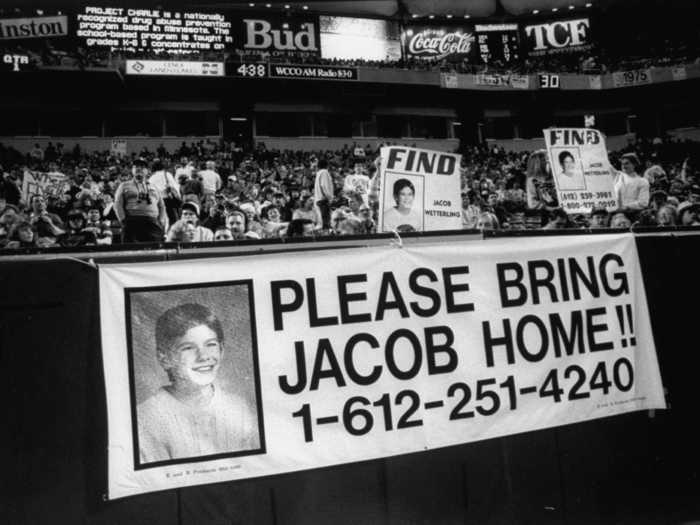
Jacob Wetterling, 11, his brother Trevor, and their friend Aaron, were riding their bikes home at around 9 p.m. in October 1989 when a car pulled up next to them. A masked individual got out, and made them lie down on the ground, face-down, at gunpoint. He told Trevor and Aaron to run, shoved Jacob into his car, and for 27 years, no one knew what happened to him.
Then, in 2016, police found child pornography in the home of Danny Heinrich, who had been interviewed by the police back in the '80s when Jacob first went missing. In exchange for the murder charge being dropped (not, however, the child pornography charges), Heinrich led the police to Wetterling's remains, and told the courtroom how he had kidnapped, molested, and shot Wetterling before burying him in a shallow grave.
Heinrich also admitted to molesting another pre-teen, but the statute of limitations had run out. He is currently serving a sentence for child pornography, but will likely never be released.
MISSISSIPPI: The murder of Emmett Till in Money
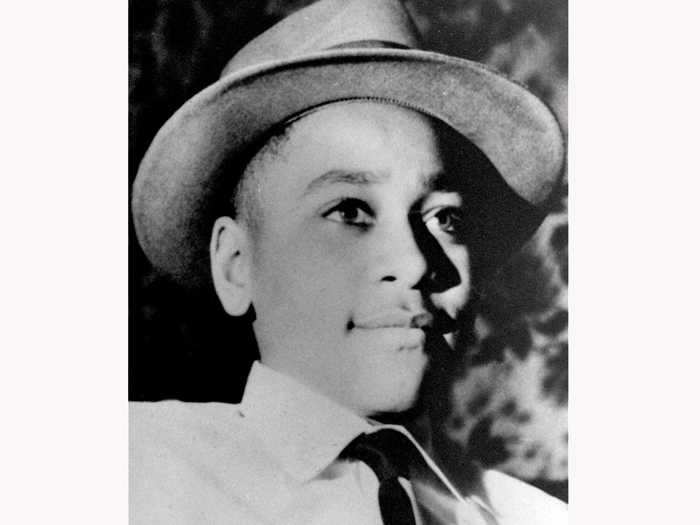
Originally from Chicago, Till, 14, was in town visiting relatives when he walked into a convenience store on August 24, 1955, with a few friends.
The store was owned by the Bryants, a white family. Till was accused of either whistling at, flirting with, or touching the hand of Carolyn Bryant (whose husband owned the place). Four days after the alleged incident took place, her husband Roy and his half-brother J.W. Milam kidnapped Till, shot him in the head, and beat him with a gun. They then dumped his body in the Tallahatchie River.
Four days after he had been reported missing, authorities found his body: The only thing that led to his identification was a ring he was wearing, which featured his father's initials. Till's mother chose to have an open-casket funeral to "let the world see what has happened, because there is no way I could describe this."
Though the evidence against Bryant and Milam was compelling, an all-white, all-male jury acquitted them of Till's murder. Four months later, the pair admitted to the killing in Look Magazine, protected by double jeopardy laws (wherein people can't be prosecuted for the same offense after either an acquittal or a conviction).
His death spurred on the Civil Rights Movement in the US significantly. Six decades later, Carolyn Bryant Donham admitted that the original allegations against Till weren't even true.
MISSOURI: The Union Station Massacre in Kansas City
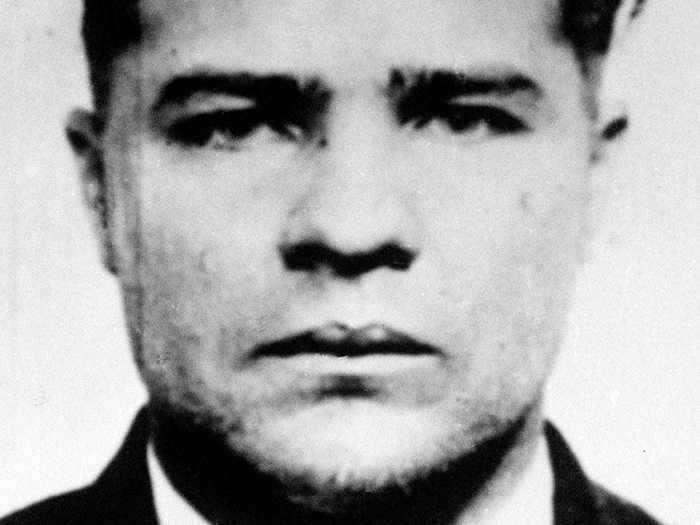
The Union Station Massacre (also known as the Kansas City Massacre) took place on June 17, 1933. A prisoner, bank robber Frank Nash, was being escorted back to the US Penitentiary at Leavenworth after he escaped in 1930. Nash had serious ties to organized crime in Kansas City, which explains why his transfer was lit up by three shooters. By the time it was over, four law enforcement officers and Nash himself were dead or dying.
The FBI believes that the three gunmen were Charles Arthur "Pretty Boy" Floyd, Vernon Miller, and Adam Richetti, all notorious criminals. Miller was later murdered, Floyd was killed while trying to evade police, and Richetti was eventually caught and executed in prison.
While it's not as well-known as other shootings, the Union Station Massacre had a lasting effect on our country. J. Edgar Hoover was the lead investigator on the federal investigation of the shooting, and it shaped his career, helping him become the first and longest-serving head of the FBI.
MONTANA: The murder of Miranda Fenner in Laurel
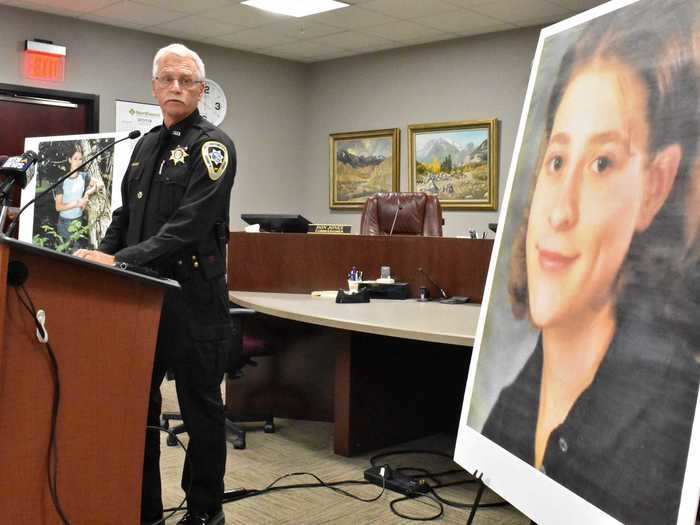
On November 15, 1998, 18-year-old Miranda Fenner was attacked while working at a local video store. She was stabbed and slashed in the throat, but managed to crawl to the entrance of the store where she was spotted by passerby. She died of her injuries two hours later.
Her mother remained active in seeking information about her killer. The case was featured on the Discovery Channel show "Sensing Murder" as well as "The Montel Williams Show."
In 2019, it was announced there was a break in the case: A man named Zachary David O'Neill had confessed. O'Neill pleaded guilty in July 2019, the Billings Gazette reported. He had first confessed to the crime in 2017, but he appeared to be "coming down off meth," court documents reported. While others have confessed to the murder over the years, O'Neill knew details that hadn't been released to the public. He was also charged with another unsolved rape and attempted murder case, and was eventually sentenced to life in prison.
NEBRASKA: The 1958 murder spree of Charles Starkweather in Lincoln
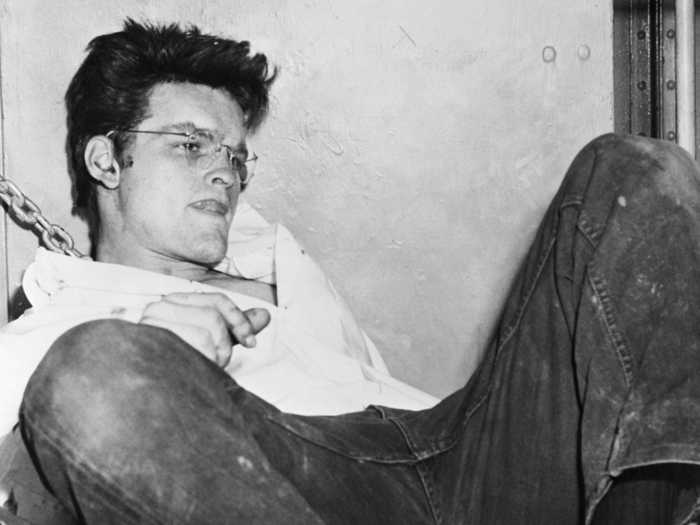
Starkweather, 19, embarked on a week-long killing spree in 1958 that culminated in a high-speed car chase. He killed the mother, stepfather, and 2-year-old half-sister of his 13-year-old girlfriend, Caril Fugate, after an altercation, and lived in the house with the dead bodies for six days before fleeing. Fugate would later claim that she was being held hostage, and that she feared for her life.
The pair drove to the home of a family friend, August Meyer, and killed him too. Then they hitchhiked off his property with another young couple, and killed them both. Eventually, they landed at the home of C. Lauer Ward (a rich industrialist), and killed him, his wife, and their maid. But the authorities were hot on their tail — so they killed a shoe salesman and stole his car. Starkweather was unfamiliar with the car, attracting the attention of onlookers and getting caught by police after engaging in a high-speed car chase.
Starkweather was found guilty and was given the electric chair in 1959. Fugate was also found guilty, but sentenced to life in prison because she was a minor. She was released on parole in the '70s.
NEVADA: The murder of Tupac Shakur in Las Vegas

Prolific rapper Tupac Shakur, 25, was in Las Vegas with his manager Suge Knight to watch the Mike Tyson fight in 1996. Knight and his entourage were involved in a physical altercation after the fight, and Shakur eventually hopped in his car and drove away.
That night, while his car was stopped at a red light, another car pulled up and shot into Shakur's vehicle 13 times. He was hit six times, and died six days later in the hospital due to his wounds.
Gang rivalries were suspected as a motive, but his death has spawned a host of conspiracy theories, including some that say he's still alive.
NEW HAMPSHIRE: The disappearance of Maura Murray in Haverhill

Maura Murray was a 21-year-old nursing student at the University of Massachusetts Amherst when she abruptly disappeared without a trace in 2004. She had emailed her professors about a death in the family, explaining that she was going to be missing class for a week, but no such death had taken place.
She hopped into her car and was never heard from again.
According to authorities, her car skidded off the road and hit a snowbank between 7 and 7:30 p.m. A bus driver came upon her car, and asked if she needed help, but Murray claimed that she had already called for roadside assistance. However, the bus driver felt like something was off, and ended up calling the police when he got home. By the time police arrived, Murray was gone.
It's still unknown what happened to Murray. Some people thought she intentionally disappeared, others thought she encountered something dangerous in the woods. An Oxygen series, "The Disappearance of Maura Murray," brought the case back into the public eye, but we might never find out what happened to her.
NEW JERSEY: The List family murders in Westfield
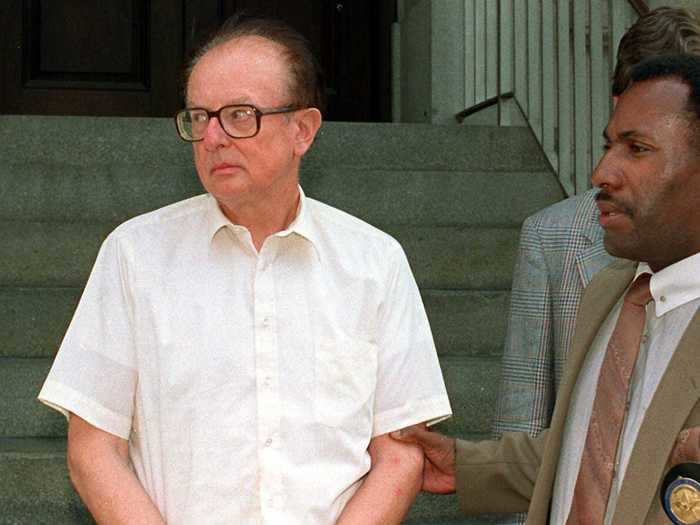
John List drove to the train station every day for months, pretending he was going to work, but instead he was actually sitting in his car reading the paper or napping.
He had lost his accounting job and did not know how he would tell his family. So, instead of telling them, he shot them all (his wife, mother, and three children) on November 9, 1971. He later explained it was to ensure that they would go to heaven.
He then closed his bank accounts, cashed in his savings bonds, phoned his children's schools to explain that they would be gone for a while visiting their sick grandmother in North Carolina, and cut himself out of every family photo (so there would be no photo for the wanted poster).
List evaded authorities for 18 years — he even remarried. But he was brought down in one of the most American ways possible. After seeing an image of what investigators thought List would look like on an episode of "America's Most Wanted," one of his neighbors called the police.
List died in prison in 2008.
NEW MEXICO: The disappearance of Tara Calico in Belen

A 19-year-old Tara Calico was planning on biking around her neighborhood before returning home in September 1988. She even jokingly told her mother to go looking for her if she wasn't back by noon. Sadly, this came to pass. Calico never returned home from her bike ride.
After she'd been missing for a year, a suspicious Polaroid was found in a parking lot in Florida. The picture showed a young boy and a girl tied up in bed, with duct tape over their mouths. Scotland Yard, London's police force, concluded the photo was Calico, but the FBI called it inconclusive. It's still unknown who was in the photo, or what happened to Calico.
NEW YORK: The murder of the entire DeFeo family in Amityville

On November 13, 1973, 23-year-old Ronald DeFeo Jr. murdered his entire family while they were sleeping. He confessed to killing them, claiming that "the voices in the house" made him do it.
Since the murders, DeFeo has changed his story multiple times. He's currently serving six life sentences for the deaths of his family.
The house is now considered haunted. The Lutz family moved in after the murders and claimed to immediately experience paranormal activity. Their allegedly spooky time in the house became so well-known that a successful movie (and less successful remake) was based on it.
NORTH CAROLINA: The MacDonald family murders at Fort Bragg
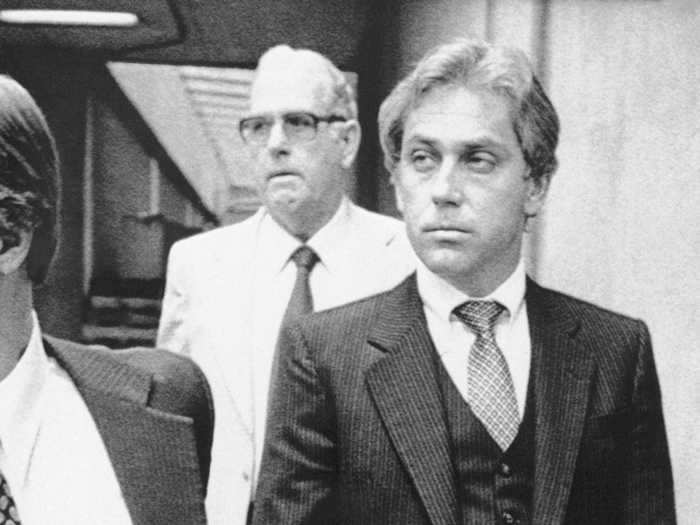
When police were called to the MacDonald home in February 1970, they assumed they were walking into a domestic dispute. Unfortunately, they walked into something much darker, finding pregnant 26-year-old Collette MacDonald and her two daughters dead in their home.
Jeffrey, the MacDonald patriarch and an Army surgeon, was alive, with relatively minor wounds compared to the rest of his family. Collette had been stabbed 21 times with an ice pick and 16 times with a knife. Kirsten, 2, had been stabbed 33 times with a knife and 15 times with an ice pick, and Kimberly, 5, had been stabbed around 10 times. MacDonald suffered cuts and a bruises, and a punctured lung.
MacDonald claimed that a group of four strangers had broken into their home and committed the murders while chanting "Acid is groovy" and "Kill the pigs." He has stuck by that story for almost 50 years. The crime was originally investigated by the US Army, who exonerated MacDonald and recommended that the authorities look into a local woman who had been known to use drugs.
Nine years later, after the efforts of MacDonald's stepfather-in-law, MacDonald was charged with the murder of his family. Though he maintained his innocence, he was convicted, and is still serving his sentence. An FX docuseries based on the crimes, "A Wilderness of Errors" is set to premiere, this September.
NORTH DAKOTA: The Wolf family murders in Turtle Creek
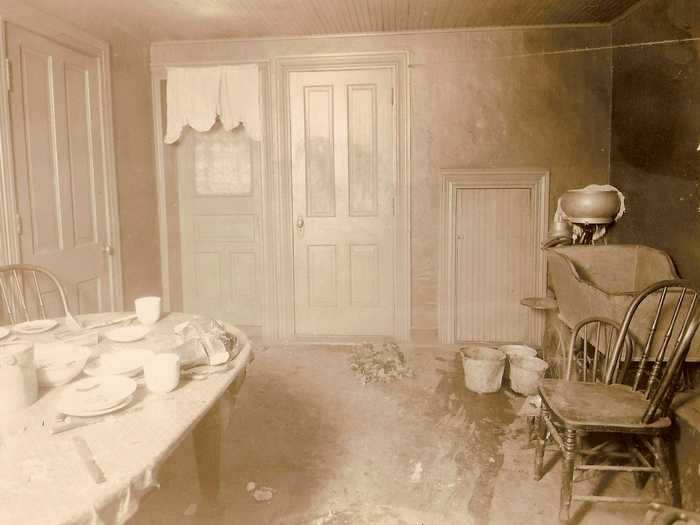
In 1920, a worried neighbor discovered almost the entire Wolf family dead at their farm — they had all been stabbed and shot. The only family member that was spared was 8-month-old Emma.
Their tombstone reads "The Murdered Family." At the time, it was unclear who was behind the killings, though police picked up Henry Layer after he reportedly acted strangely throughout the funeral service, and was said to have had a quarrel with the Wolfs. Layer confessed to killing the family in a haze and was sent to prison, but later retracted his confession, claiming it was made under duress.
He died in prison.
OHIO: The Ariel Castro kidnappings in Cleveland

Between the years 2002 and 2004, Castro kidnapped three young women and held them captive in his home, where he sexually assaulted them. The three young women, Michelle Knight, Amanda Berry, and Gina DeJesus were 21, 16, and 14 respectively when they were taken. All had accepted rides from Castro and were persuaded to enter his home, where he would attack them and force them into locked rooms.
Berry was eventually impregnated by Castro and gave birth to a daughter. The four were rescued when Berry broke through a boarded up door and called 911 — around a decade after the three had been kidnapped.
Castro was taken into custody, but hanged himself from a bedsheet in his cell. His death was ruled a suicide, and his house was demolished with the full support of his three victims.
OKLAHOMA: The Girl Scout murders in Mayes County
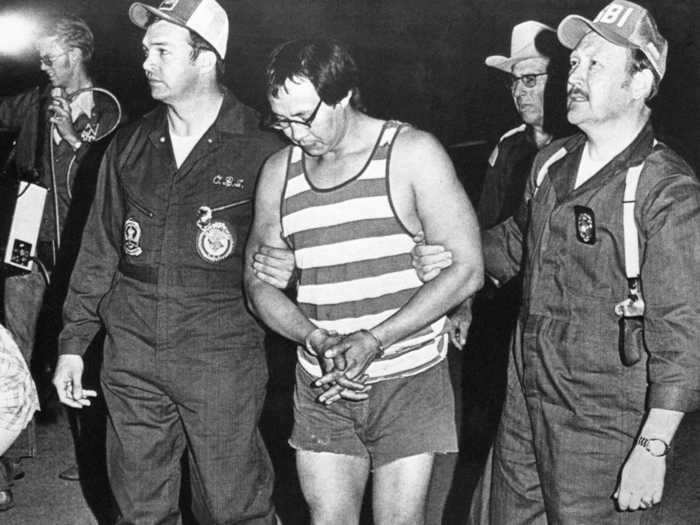
The tragic story of the death of three Girl Scouts begins two months before the murders actually took place. A camp counselor said she returned to her tent to find her belongings rummaged through, and a note threatening to kill three campers.
The note was dismissed as a hoax, but two months later, in June 1972, three Girl Scouts, all between the ages of eight and 10, were found dead on the path from their tent to the showers. They had all been sexually assaulted, bludgeoned, and strangled.
The only clue examiners found on the bodies was a single hair, believed to be Native American. This led to the arrest of Gene Leroy Hart, who had been previously convicted of raping two different pregnant woman, and of four accounts of burglary, and was at-large, having escaped prison.
Even though local law enforcement was convinced of his guilt, no tangible evidence tied him to the scene of the crime, and Hart was acquitted.
The case remains unsolved.
OREGON: The Longo family murders in Waldport

Four-year-old Zachary Longo's body was found floating off the Oregon coast in December 2001. His entire family had been reported missing after his mother Mary Jane's cellphone service had been disconnected, and his family's home in Ohio was found abandoned.
Three days later, divers found the weighed-down body of his sister Sadie. And finally, two suitcases were found containing the remains of Mary Jane and her third child, Madison. Nowhere to be found? The Longo family patriarch, Christian.
Before long, Longo was on the FBI's Ten Most Wanted list, and a manhunt was underway. But the story took an unexpected turn — Longo was found in Mexico, pretending to be travel writer Michael Finkel (among other assumed identities).
Longo, after amassing more and more debt, had decided he wanted to "escape the shackles of domestic life" and saw killing his family as the only way to do so.
He was sentenced to death for the murders of his wife and three children. A movie featuring James Franco titled "True Story" was based on him.
PENNSYLVANIA: The Penn State child sex abuse scandal in State College
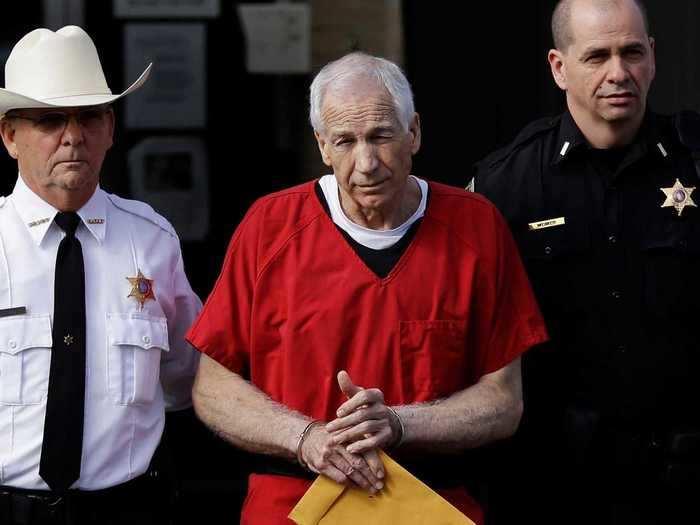
The Penn State college football program is nationally renowned, and many credited prolific coach Joe Paterno and his coaching staff for this reputation. However, one of his staff members, former assistant coach Jerry Sandusky, was charged with 45 counts of abuse in 2012, due to alleged sexual relationships with minors.
Sandsky was said to have inappropriate relationships with boys he recruited through his charity organization Second Mile. Sandusky admitted to showering with young boys, but maintained that he was not a pedophile.
He ended up being convicted on 45 of 48 charges, and is currently serving his 30- to 60-year sentence in a Pennsylvania super-max prison. Paterno's reputation never recovered, and he died in 2012.
RHODE ISLAND: The murder of Jason Foreman in South Kingstown
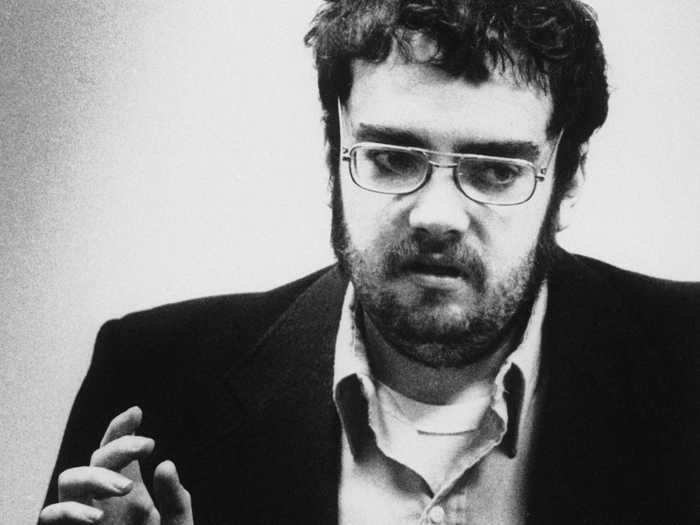
Five-year-old Jason vanished without a trace in 1975 — he was so close to his home at the time that his mother said she heard him laughing from their house. However, he never made it inside, and the case went cold.
Seven years after he went missing, in 1982, Michael Woodmansee was questioned for a different crime: A 14-year-old boy said Woodmansee had tried to lure him into his home. Woodmansee soon confessed to Jason Foreman's murder. When police investigated Woodmansee's room, they found the boy's skull on his dresser, and a particularly graphic journal that allegedly contained details of his death. Woodmansee was just 16 when he kidnapped and killed the child. While details in the journal led many to believe that Woodmansee ate Jason Foreman, this was never proven in court because he pleaded guilty before the jury could hear the whole story.
The case was brought into the spotlight again when it was made public that Woodmansee would be released from prison early, after only serving 28 years of his 40-year sentence. His early release was due to what is known as the "Good Time" law, in which inmates' sentences get reduced for every day they aren't written up for any violations.
Woodmansee was released in 2011, but was immediately transferred to a mental hospital voluntarily.
SOUTH CAROLINA: The murders of Tyler and Alexander Smith in Union
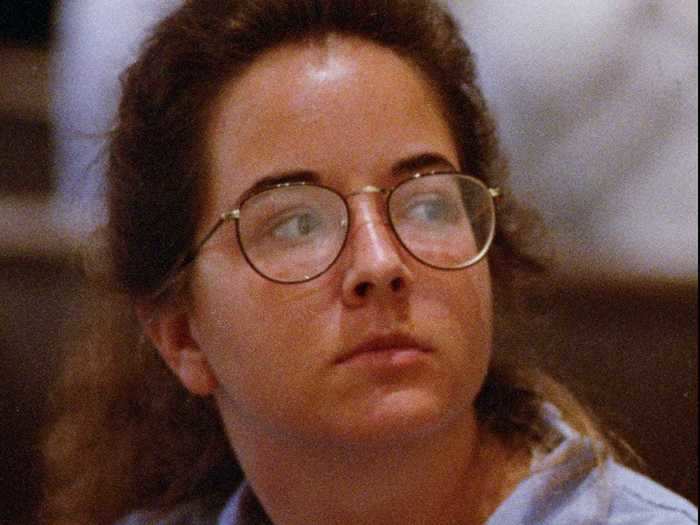
Susan Smith claimed that her car had been stolen by an unknown Black man with her two young sons inside, and stuck to this story for nine days, appearing on TV and giving interviews pleading for her sons to be returned. Slowly but surely, however, her story unraveled, and authorities were able to find cracks in her narrative.
After being pushed by investigators, Smith tearfully confessed to locking her sons in her car, and pushing it down a ramp into a lake. Autopsy reports confirmed that the boys were alive when the car was submerged, and recreations of the sinking showed that it would have taken at least six minutes for the car to fill up with water.
Sordid details were soon uncovered about Smith, including an extramarital affair and a sexual relationship with her stepfather. She was eventually found guilty of the murders of her two sons and sentenced to life in prison.
SOUTH DAKOTA: The John Dillinger bank robbery in Sioux Falls
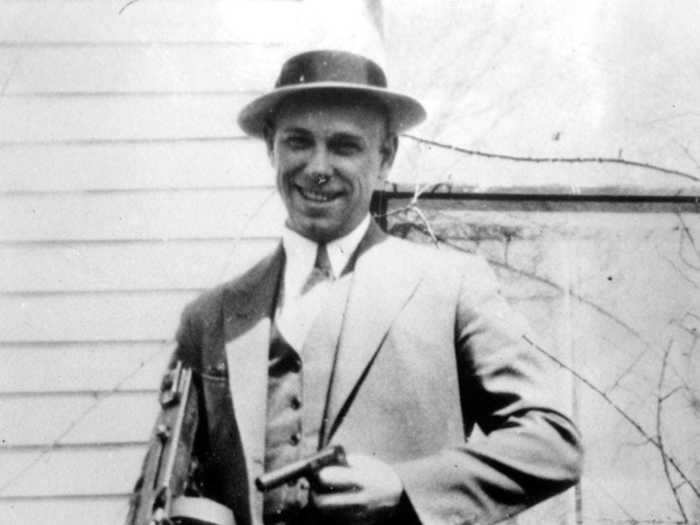
On March 6, 1934, Dillinger and an accomplice held up the Security National Bank in Sioux Falls, making off with almost $50,000 (which would be almost $1 million today). The robbers wounded a police officer and took four women hostage.
Dillinger was a notorious gangster that terrorized the Midwest — he is said to have killed 10 men, robbed dozens of banks, and even escaped from prison three times.
While Dillinger was eventually killed in a standoff with police in July 1934, the money was never recovered.
TENNESSEE: The Lillelid family murders in Greeneville

Three of the four members of the Lillelid family were murdered on April 6, 1997, outside the small town of Greeneville. Peter, who was 2 years old at the time, was the only survivor, though he was left with permanent disabilities.
They were shot on a deserted road, in what was believed to be a carjacking committed by a group of six young men and women from Kentucky who were running away to New Orleans. Once they had stolen the Lillelids' van, they tried to escape to Mexico, where they were stopped by the police, returned to the US, and promptly arrested.
The six youths, who were between the ages of 14 and 17 and all came from troubled backgrounds, were convicted of the murders, plus the attempted murder of Peter.
While there were rumors about alleged occultism and devil worship, this was refuted by one of the murderers, Karen Howell.
All six are currently serving life sentences.
TEXAS: The murder of Joan Robinson Hill in Houston

Socialite Joan Robinson Hill died of unexplained causes at age 38. Her husband was accused of murdering her by omission — he had delayed seeking medical care for her. She was sick for two days before her husband, Dr. John Hill, a respected plastic surgeon, decided to drive her to the hospital. She died before doctors could pinpoint exactly what was wrong with her, in March 1969. Her husband was remarried by June.
Despite various autopsies, no one knows for sure what killed Joan, though many believe her husband had poisoned her.
However, Hill was never charged: His first trial ended in a mistrial when his second wife blurted "he told me he killed Joan with a needle," and he himself was murdered in his own home before the second trial.
The police ended up charging Bobby Wayne Vandiver for the murder of John Hill, who claimed that a Houston madam had paid him to kill him. But before Vandiver could go to trial, he was killed in an unrelated incident.
One of the most famous true crime books was written about the case, titled "Blood and Money," which in turn inspired a 1981 TV movie, "Murder in Texas," starring Sam Elliott, Katharine Ross, and Farrah Fawcett.
UTAH: The murders of Melvyn John Otterstrom and Michael Burdell in Salt Lake City
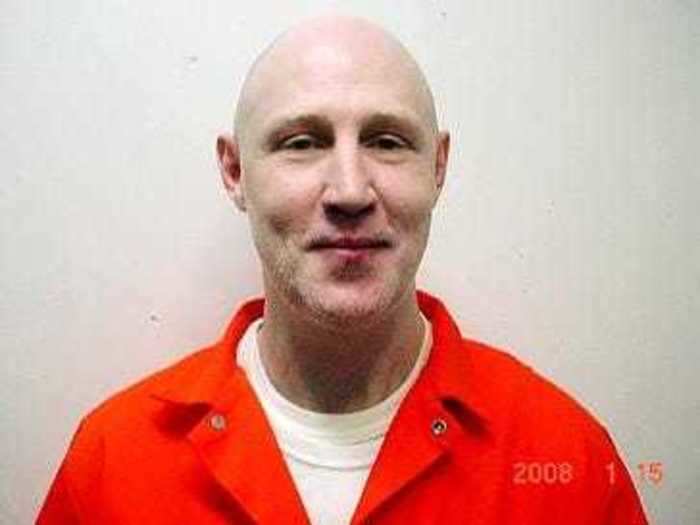
Gardner was a man with a troubled past filled with charges of petty theft, robbery, and assault.
He was in a Utah prison for shooting his girlfriend's lover in the neck, but managed to escape in August 1984 by faking an illness and breaking out of the hospital. While on the run, he robbed the Cheers Tavern in Salt Lake City and fatally shot the bartender, Melvyn Otterstrom.
Gardner was eventually captured and charged with Otterstrom's murder. While he was in court for the murder of Otterstrom, Gardner attempted to escape with a gun he had smuggled into the building, and ended up fatally shooting Michael Burdell, an attorney.
Gardner was sentenced to life in prison for the death of Otterstrom and given the death penalty for the death of Burdell. Gardner's case was in appeals court for 25 years, inspiring the state of Utah to introduce legislation that would impose limits on the number of appeals a case can have. Gardner was executed by firing squad in 2010, the first time a firing squad had been used since the practice was abandoned in 2004.
VERMONT: The East Middlebury murders in East Middlebury

In 1935, a mother and daughter were walking in the woods when they came across a skull. Upon investigating the site, authorities found three bodies: a woman and two young boys who were presumed to be her sons.
Eighty years later, the bodies remain unidentified, and the reason for their death is still unclear. All three were shot in the head and dumped in a ditch. But why?
Vermont locals are still trying to solve the case.
VIRGINIA: The Norfolk Four in Norfolk

Michelle Moore-Bosko was found dead in her apartment by her husband, Michael, in July 1997. When the police questioned neighbors and friends, one told them to take a closer look at Danial Williams, a neighbor. Within 24 hours, Williams had been charged with Moore-Bosko's rape and murder. He confessed after 11 hours of intense questioning.
When DNA evidence showed no sign of Williams in the apartment, he implicated three other men: Derek Tice, Joseph Dick, and Eric Wilson. Those three also confessed to committing the crime after lengthy questioning, but DNA evidence couldn't place any of them at the crime scene either. Plus, none of them had matching stories, and their accounts of the crime kept changing. Finally, the victim's wounds were more consistent with one attacker stabbing her repeatedly than four attackers taking turns, which is what the prosecution claimed. However, all four were found guilty of varying degrees of murder and rape and imprisoned.
In 1999, Omar Ballard, an inmate who had pleaded guilty to raping a 14-year-old girl, wrote a letter to a friend confessing to the crime. DNA evidence confirmed that Ballard had been at the scene, and he confessed, claiming to have acted alone.
Twenty years after the initial arrests, the "Norfolk Four" were fully pardoned by the state of Virginia.
WASHINGTON: The Wah Mee massacre in Seattle

The Wah Mee massacre is the deadliest mass murder in Seattle's history. The Wah Mee club was a hub for illicit activities such as gambling, and operated out of the basement of a hotel. Many prominent Chinese figures in Seattle society frequented the club, which is probably why it was chosen as the location for an armed robbery.
On February 18, 1983, Kwan Fai "Willie" Mak, Benjamin Ng, and Tony Ng entered the club and shot 14 people. All but one died. The lone survivor, Wai Y. Chin, was able to testify against the three in court.
Mak and Benjamin Ng were caught and charged with 13 counts of murder six days after the massacre. Tony was charged in absentia the next month, and was subsequently added to the FBI's "Ten Most Wanted Fugitives" list. He was apprehended in Canada in October 1984.
Mak and Benjamin Ng were both found guilty of murder, and were sentenced to life in prison. Tony Ng was acquitted of murder, but found guilty of 13 counts of first-degree robbery and one count of assault with a deadly weapon.
WEST VIRGINIA: The murder of Skylar Neese in Star City
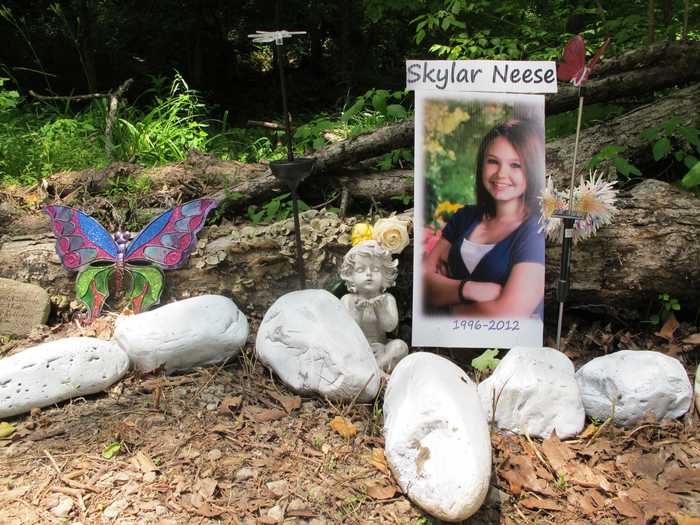
The last time 16-year-old Skylar was seen alive was in grainy security camera footage that showed her sneaking out of her window at 12:30 a.m.
This timing directly contradicted what Neese's friend Shelia Eddy told Neese's parents. Eddy claimed that she and another friend of Neese's, Rachel Shoaf, had picked Neese up at around 11 p.m., and that she was home before midnight.
Shoaf eventually confessed that her and Eddy just "didn't want to be friends with [Neese] anymore," and thus decided to murder her. According to Shoaf's testimony, the two bought all the supplies they thought they would need, convinced Neese to get in a car with them, and began stabbing her, leaving her body in the Pennsylvania woods.
Shoaf and Eddy kept up their lies from July 2012 until January 2013, when Shoaf broke down and confessed. Chillingly, they had been asking the Neese family for updates and helping with search efforts until then.
Both were eventually convicted of murder and are currently in prison.
WISCONSIN: The Slender Man stabbing in Waukesha
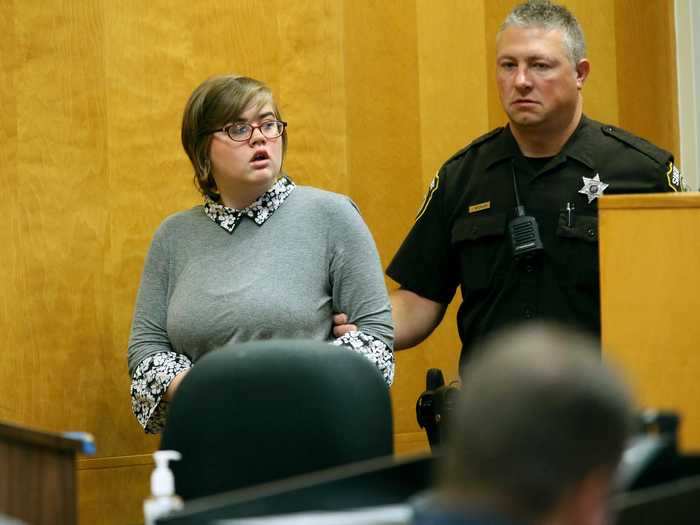
Two 12-year-old girls, Anissa Weier and Morgan Geyser, stabbed their friend Payton Leutner (also 12) 19 times and left her for dead in the woods in May 2014.
They wanted to kill her to prove their loyalty to a demonic internet creation called "Slender Man," whom they believed was real.
Leutner was fortunately discovered by a biker and rushed to the hospital, surviving her traumatic injuries. Geyser and Weier were picked up by the cops later that morning and found to be in possession of a knife. Both confessed to the crime. According to authorities, Geyser told a detective, "It was weird that I didn't feel remorse."
Due to the severity of the crime and its premeditated element, the state of Wisconsin tried the pair as adults. Both were found not guilty by reason of mental disease or defect. Weier was sentenced to up to 25 years in a mental institution, and Geyser was sentenced to up to 40 years in a mental institution. Leutner is currently in high school.
WYOMING: The disappearance of Amy Wroe Bechtel in the Wind River Mountains

Bechtel went missing during a run on July 24, 1997 — police only know this because her car was found near a running trail she frequented.
Her car and an eyewitness who claimed they saw a woman who could have been Bechtel jogging was all the evidence there was. Six years later, a watch similar to the one Bechtel owned was found in the area, but it was impossible to connect it to her.
According to Fremont County Sheriff Sgt. Roger Rizor, the lead investigator, there is just one person of interest: Bechtel's husband Steve, who lawyered up immediately and has been steadfast in his refusal to take a polygraph test. Sgt. Rizor told the Billings Gazette, "In my mind there is only one person that I want to talk to, only one person who has refused to talk to law enforcement, and that's her husband."
Steve Bechtel maintains his innocence and was able to provide an alibi for the time of his wife's disappearance. While her case remains open, her husband declared her dead in absentia in 2004.
READ MORE ARTICLES ON
Popular Right Now
Popular Keywords
Advertisement